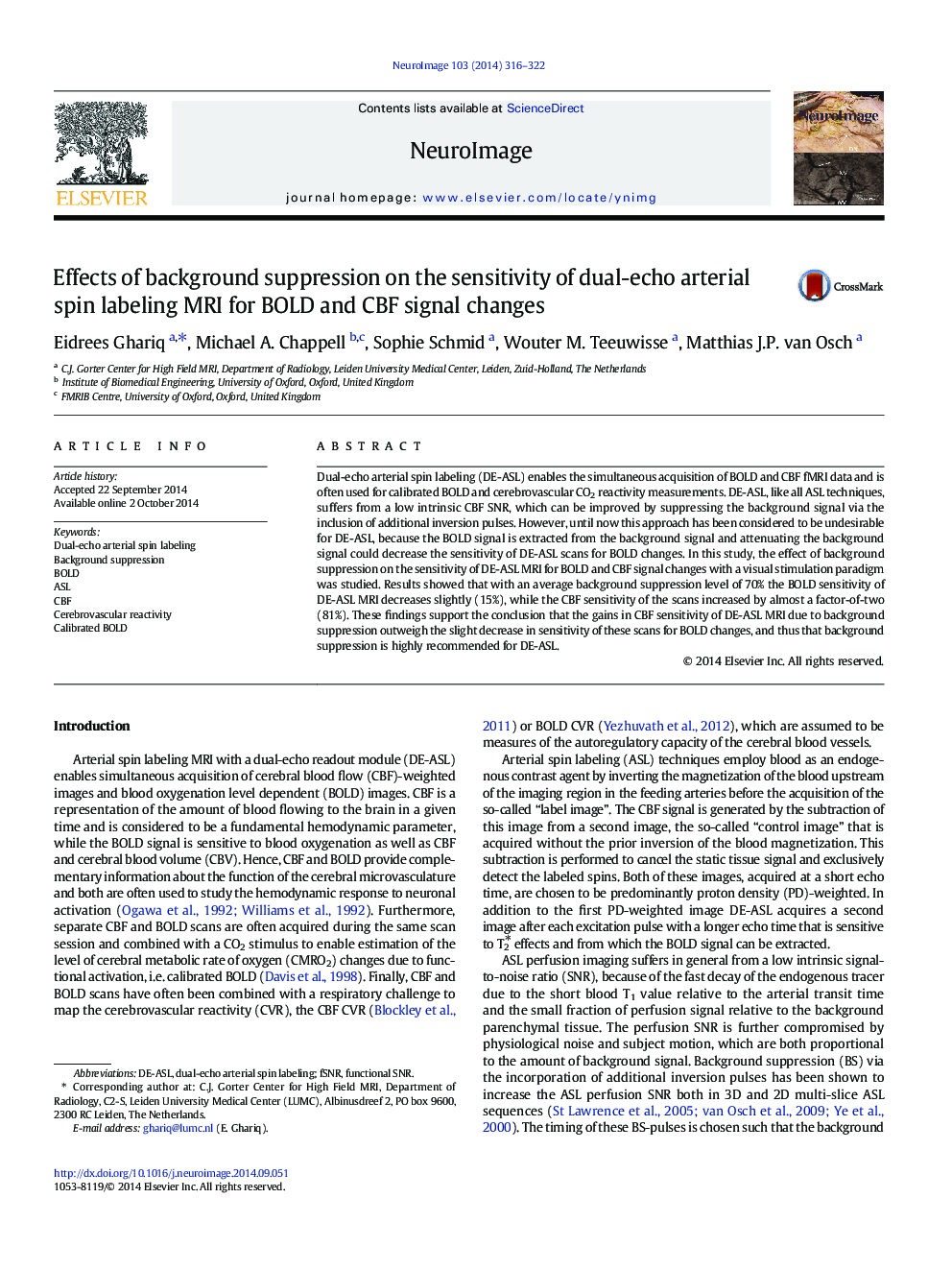| Article ID | Journal | Published Year | Pages | File Type |
|---|---|---|---|---|
| 6025759 | NeuroImage | 2014 | 7 Pages |
Abstract
Dual-echo arterial spin labeling (DE-ASL) enables the simultaneous acquisition of BOLD and CBF fMRI data and is often used for calibrated BOLD and cerebrovascular CO2 reactivity measurements. DE-ASL, like all ASL techniques, suffers from a low intrinsic CBF SNR, which can be improved by suppressing the background signal via the inclusion of additional inversion pulses. However, until now this approach has been considered to be undesirable for DE-ASL, because the BOLD signal is extracted from the background signal and attenuating the background signal could decrease the sensitivity of DE-ASL scans for BOLD changes. In this study, the effect of background suppression on the sensitivity of DE-ASL MRI for BOLD and CBF signal changes with a visual stimulation paradigm was studied. Results showed that with an average background suppression level of 70% the BOLD sensitivity of DE-ASL MRI decreases slightly (15%), while the CBF sensitivity of the scans increased by almost a factor-of-two (81%). These findings support the conclusion that the gains in CBF sensitivity of DE-ASL MRI due to background suppression outweigh the slight decrease in sensitivity of these scans for BOLD changes, and thus that background suppression is highly recommended for DE-ASL.
Related Topics
Life Sciences
Neuroscience
Cognitive Neuroscience
Authors
Eidrees Ghariq, Michael A. Chappell, Sophie Schmid, Wouter M. Teeuwisse, Matthias J.P. van Osch,
